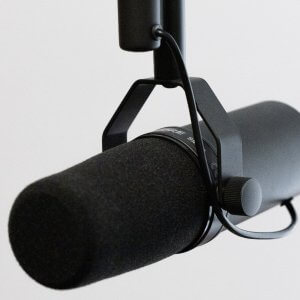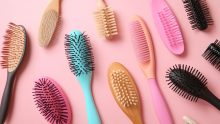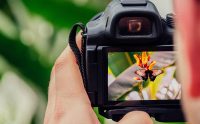Advertising Disclosure
Best podcast microphones: 3 great options
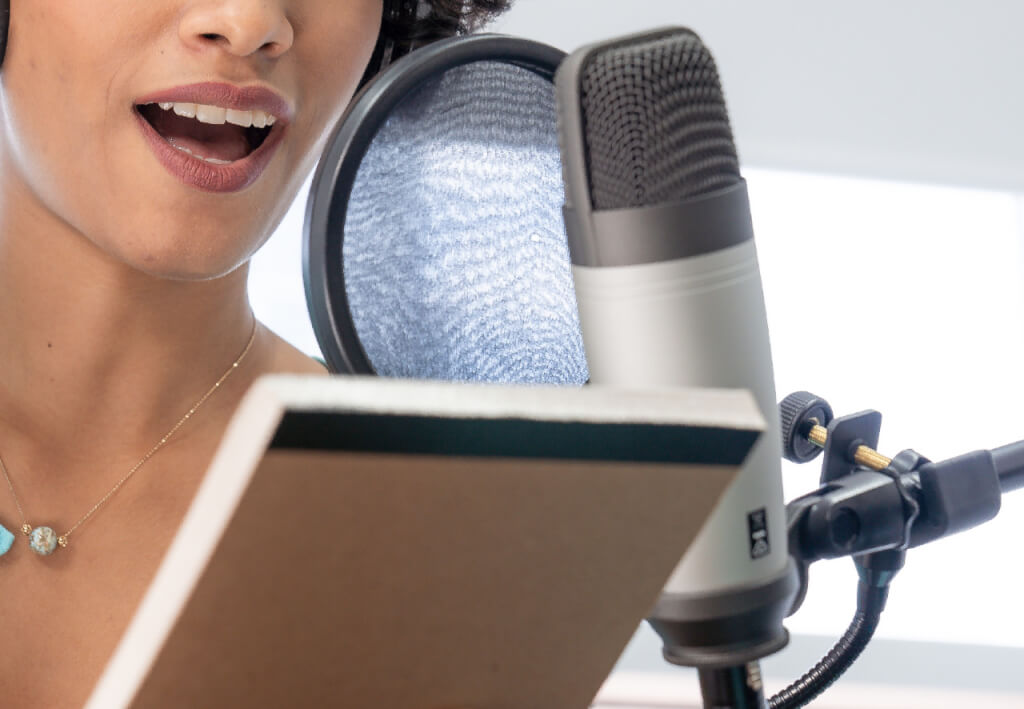
Starting a podcast is a lot of fun, and it doesn’t require too much equipment. But at the very least, you’ll need something to record your voice. It might get overwhelming choosing the best podcast microphones when you start looking at the hundreds available on the market. Navigating the reviews and finding something that meets your needs and budget can be frustrating. So we reached out to podcasters to get a consensus about the best podcast microphones they recommend for any skill level and at any budget.
BEST PODCAST MICROPHONES – AUDIO-TECHNICA 2020
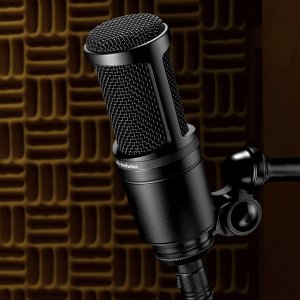
The Audio-Technica 2020 retails for $169, but you can buy one on Amazon for less than $100. That makes it an outstanding entry-level choice. The mic uses a cardioid polar pattern. A cardioid pattern reduces the pickup of sounds from the sides and rear and records sound sources directly in front of the mic. This ensures a rich, full-bodied sound. The 2020 may not have the best sound quality compared to other podcast mics. But it’s affordable, durable and a good choice for those just getting their feet wet.
Audio engineer Daniel Espinoza says the Audio-Technica 2020 is the microphone the Los Angeles Film School issued to him. He told us, “The reason I love that this mic doesn’t have the best sound quality is that it forces me to work and edit cleaning up the vocals. But in the end, this just makes you a more skilled audio editor.” In other words, you can look at this mics shortcomings as an entry-level product as an opportunity to enhance your audio editing skills while you learn the podcasting ropes.
BEST PODCAST MICROPHONES – BLUE YETI
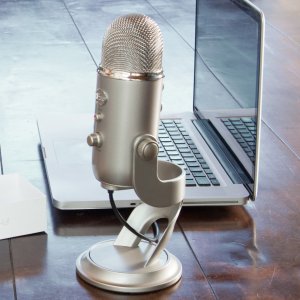
The Blue Yeti mic stands at 11.6 inches, an ideal height to speak directly into the mic without having to hunch over. That’s especially nice if you are on the taller side. It also comes with a mute button, which is a lifesaver if you find yourself in a coughing fit and need to grab some water. This mic has controls for headphone volume, volume gain control,and a direct headphone monitoring option. With a price tag of $129.99, the Blue Yeti mic is an outstanding option for the price you pay.
BEST PODCAST MICROPHONES – SHURE SM7B
The Shure SM7B costs $399 and is worth every penny. This microphone is the go-to mic for professional voiceover artists, podcasters and singers. Michael Jackson used its precursor, the Shure SM7, to record “Thriller.” Some popular podcasters that record their shows using the Shure SM7B are Dax Shepherd with “The Armchair Expert,” Anna Faris with “Anna Faris Is Unqualified,” and Joe Rogan with “The Joe Rogan Experience.” The SM7B mic is perfect for podcasts due to the cardioid pickup pattern that only records sound from the front. It’s a low-noise mic with a low pickup of background noise. It also has a built-in pop filter and two windscreen options, and variable frequency response settings.
The downside to the Shure SM7B is that it is an XLR microphone and requires an additional preamp/USB adapter for you to use with your computer as there is no USB connection. Shure offers a microphone to USB adapter for $99 called the X2U. This has zero-latency monitoring and works with both Windows and Mac computers. However, if you are looking for a more advanced audio interface, the Focusrite Scarlet Solo is available to purchase on Amazon and has more inputs, outputs and control options. The Shure SM7B mic also needs a female-to-male XLR cable to attach your mic to your interface, preamp, recorder, or USB adapter, but you can easily purchase that from Amazon.
All of this is to say the Shure SM7B is probably not the best choice for total audio novices. But it is an investment that more than lives up to the hype if you’re going to be in the podcasting game for the long haul.
